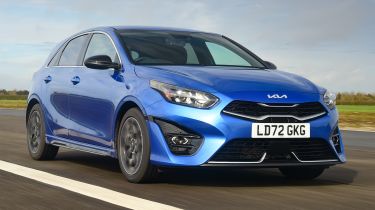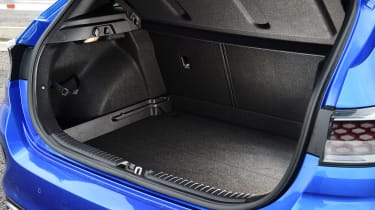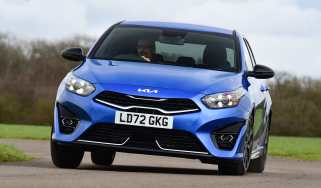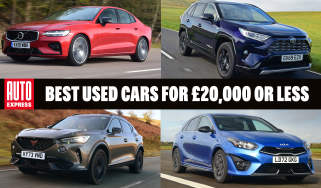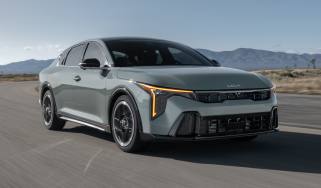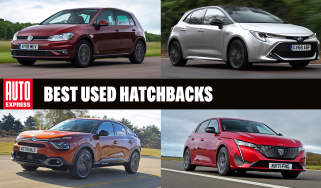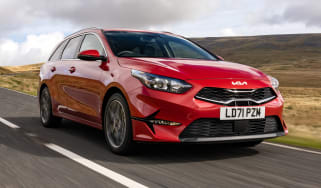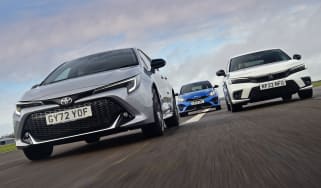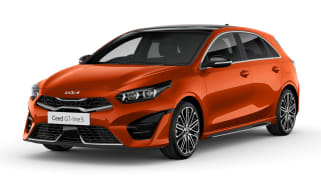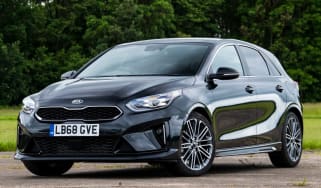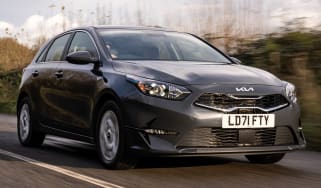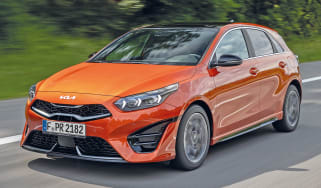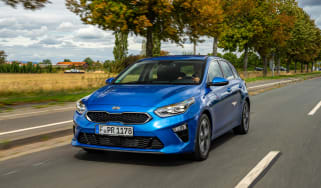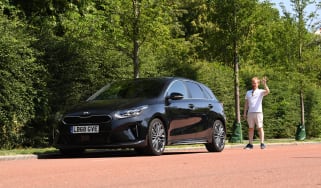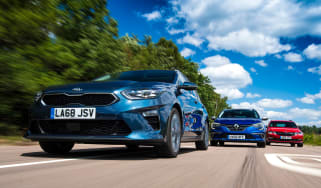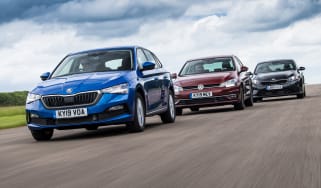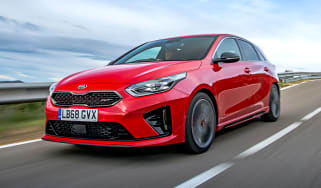Kia Ceed review
The Kia Ceed is one of the firm’s best-selling cars, and the latest model is a hatchback front-runner

If you’re in the market for a family hatchback, the Kia Ceed should be on your shortlist. It’s well-priced, good to drive and has all the essential technology. It’s important not to be wooed by models higher up the Kia Ceed range, even if these come with every conceivable item of equipment. The entry-level Ceed offers everything you’d need with the same amount of practicality, but for a much more reasonable price – especially against the competition.
What’s more, it’s arguably more comfortable to drive than sportier rivals, which ride on bigger wheels. Add in the attraction of Kia’s seven-year warranty, and the Ceed is a strong contender in the family hatchback class.
About the Kia Ceed
The Internet has altered many aspects of modern life, including the name of the Kia Ceed. The third-generation version of the five-door hatchback went on sale in 2018, but what it didn’t have was an apostrophe in its name. Kia decided to review the name and make it easier for prospective customers to type when they search for the car online.
But the change from Cee’d to Ceed was needed, as the car faces off against some seriously capable rivals – the Volkswagen Golf, Ford Focus, Honda Civic, Toyota Corolla and Vauxhall Astra, to name but a few – so it’s no surprise that the firm has gone to great lengths to help the Ceed stand out. Kia refreshed the Ceed in 2021, introducing sharper exterior styling and a range of updates to its onboard tech, which has helped the Korean hatch remain competitive in its class.
Used - available now

2020 Mercedes
AMG C43 Coupe
40,000 milesAutomaticPetrol3.0L
Cash £30,995
2022 Kia
Niro
34,064 milesAutomaticPetrol1.6L
Cash £16,699
2021 Mercedes
A-Class
53,041 milesManualPetrol1.3L
Cash £13,600
2023 Hyundai
Tucson
22,337 milesManualPetrol1.6L
Cash £21,550As well as the new name, the Ceed saw a new four-strong family of siblings arrive: a five-door hatchback, Sportswagon estate, ProCeed shooting brake and Xceed crossover.
Every new Kia Ceed is powered by a 1.5-litre turbocharged petrol engine with mild-hybrid technology and either a six-speed manual or seven-speed DCT dual-clutch gearbox, depending on which trim level you go for. The Ceed hatchback isn't available as plug-in hybrid, but there is an XCeed PHEV if you're looking to reduce your running costs.
Trim levels for the Ceed include the 2, GT-Line, 3, and GT-Line S. We like the entry-level Ceed 2 because it's priced from around £22,600 and comes well stocked with kit. It might be worth taking some time to work out exactly what equipment you need for your family hatch, as you'll be paying £3,000 to £4,000 more if you opt for a higher specification, while the top-spec model comes in at over £31,000.
The Ceed is one of Kia’s biggest-selling models in Europe, and as a result, Kia says it’s designed, engineered and built in Europe for European tastes. Alongside the VW Golf and other competitors we mentioned earlier, The Hyundai i30 is not only a rival but also the Ceed’s sister car, with both models sharing the same platform. Elsewhere, there’s also the SEAT Leon and Peugeot 308 for the Kia to contend with.
Engines, performance and drive
The changes Kia has made to improve the Ceed’s driving dynamics have paid off. Where the previous model was comfortable enough but wasn’t as much fun to drive as a Ford Focus, the latest car has a much-improved ride and handling balance.
It’s generally compliant and soaks up lumps and bumps well, although larger imperfections will still upset the Kia, whereas a VW Golf remains composed. Body lean is well-controlled in the bends, the steering is pretty direct, and there’s lots of grip.
We found the GT-Line model a little bit compromised compared with the other versions in the Ceed range, with an overly firm ride that is perhaps a little at odds with the ethos of a true family hatch. The sportier set-up means there is less body roll, but minor bumps in the road bring an unsettled feel.
The Ceed can't rival the class benchmark, the Focus, for the way it drives, but it still rewards being driven hard in a way that the previous version doesn’t.
It’s a shame that the Ceed's gearboxes are one of its biggest weaknesses. The seven-speed dual-clutch automatic transmission isn’t as swift to change as the DSG in the VW Golf, and it's rather laggy when pulling away from a standstill. However, it shifts smoothly when used gently, and its software tuning is better than that of the same gearbox fitted to the Hyundai i30.
We’d stick with a manual Ceed instead, if only because it's cheaper. It's still not great though; the engine revs tend to hang for a long time after the clutch is depressed, making it very difficult to drive smoothly. We found the latest Ceed was at its best at a motorway cruise, where you can let the revs remain low, and the ride settles down somewhat. That said, some of the Kia’s competitors, like the Toyota Corolla, are better at isolating road noise from the cabin, making them better long-distance cruisers.
0-62mph acceleration and top speed
The 1.5-litre T-GDi ISG petrol engine that powers all Ceeds allows this family hatchback to do 0-60mph in 8.4 seconds with the manual gearbox, while opting for the DCT auto increases the time to 8.6 seconds – both versions have a 130mph top speed.
That’s a competitive time when compared with the equivalent Focus and Golf, but the Honda Civic is much quicker, with a 0-62mph time of 7.9 seconds.
MPG, CO2 and running costs
The third-generation Kia Ceed is offered exclusively with a 1.5-litre petrol set-up. According to Kia, when paired with a six-speed manual transmission, the Ceed can return up to 51.4mpg and 125g/km of CO2. However, if you get the DCT automatic gearbox, the claimed fuel economy drops to 46.3mpg, while CO2 emissions increase to 137g/km.
When we pitted the Ceed in GT-Line spec against a Honda Civic and facelifted Toyota Corolla, the Kia achieved a respectable 43.5mpg, which equates to a real-world range of 478 miles on a full tank of petrol. However, because both the Honda and Toyota utilise full-hybrid technology, they returned much more impressive figures of 50.3 and 54.2mpg, respectively.
There isn’t a plug-in hybrid Ceed like you’ll find in the SEAT Leon and VW Golf GTE, so company car drivers must look at the Kia Xceed instead. Kia claims the plug-in hybrid of its Xceed will manage 201.7mpg, although, of course, you'll need to ensure the battery is regularly topped up to achieve anywhere near this figure. Company car drivers will find the PHEV particularly interesting as its 32g/km of CO2 meaning it attracts a BiK rate of 14 per cent.
Insurance groups
Insurance ratings are fairly competitive, with the Ceed lineup ranging between groups 14 and 18. Predictably, the entry-level 2 trim with manual gearbox sits in the lowest group, while the range-topping GT-Line S with DCT automatic transmission incurs the largest premiums.
In comparison, the least powerful 123bhp Ford Focus in Titanium trim is in group 15.
Check if your car needs an MoT and view its complete history with our MoT History Checker...
Depreciation
Residual values for the Kia Ceed are higher than some of its rivals, although they still fall behind the Toyota Corolla and VW Golf. A long equipment list and Kia’s transferable seven-year warranty help to keep values strong, and after three years and 36,000 miles you can expect to get an average of 46 to 51 per cent of its original list price back.
To get an accurate valuation on a specific model check out our free car valuation tool...
Interior, design and technology
Kia makes a big point of emphasising how the Ceed is designed at its European HQ in Frankfurt, Germany, for European tastes. A design evolution of the previous car, the Ceed is a pretty handsome, if generic interpretation of the modern compact hatchback.
The third-generation Ceed is built on Kia’s ‘K2’ platform. That means it's 20mm wider (1,800mm) and 23mm lower (1,447mm) than the previous model. Its wheelbase is the same at 2,650mm, with the front overhang shortened by 20mm (to 880mm), and rear overhang extended by 20mm (now 780mm), helping to make the car look a little more sporty.
As part of a facelift in 2021, Kia updated the Ceed’s exterior styling to give it a more premium look. Upgraded materials were also introduced in the cabin, while onboard tech was given a boost with a larger 10.25-inch central touchscreen, and updated software.
Buyers with a budget will be pleasantly surprised at the levels of standard kit across the range. Entry-level Ceed 2 models come with 16-inch alloy wheels, electrically adjustable and heated door mirrors, air-con, a DAB radio, Bluetooth, a reversing camera and an 8-inch touchscreen with Apple CarPlay and Android Auto smartphone connectivity.
Sat-nav, stereo and infotainment
The fit and finish of the dashboard are pretty high – although the infotainment screen looks like it’s just been stuck on top of the dash. The Ceed 2 is the only model with the most basic eight-inch screen, while the more expensive GT-Line, 3 and GT-Line S models feature a 10.25-inch display. The system works well and supports both Android Auto and Apple CarPlay, but you'll need to plug in your smartphone to use either system.
The screen’s resolution lags behind those of VW Group cars and the Toyota Corolla, and its loading times aren't exactly lightning fast, but in terms of ease of use and menu layouts, it's among the best in the class. Unlike some carmakers, Kia has elected to keep a large number of the Ceed’s core functions separate from the screen, retaining buttons and knobs for things like climate and volume control. This makes them much easier to use when on the move.
However, we found that some functions take more button presses than necessary; plotting a navigation route, for example, needs to be confirmed on a couple more pages than many rivals’ systems require.
Practicality, comfort and boot space
The Ceed is now a family of models, so if the standard Ceed five-door hatchback isn’t quite the right fit for your needs, there’s a more practical Sportwagon estate, sportier Proceed shooting brake and XCeed crossover to choose from. That said, the Ceed’s latest platform has increased space in the cabin, both for passengers and luggage.
Dimensions and size
The Ceed measures 4,310mm long, 1,800mm wide (including the door mirrors) and 1,447mm high, making it a little smaller in every dimension than a Ford Focus. It retains the exact same wheelbase as the previous Cee’d, but some clever packaging means that space in the cabin is generally pretty good, with space for five adults at a push, plus an array of cubbies and pockets around the interior for oddments large and small.
Leg room, head room & passenger space
Kia claims that rear-seat space has been improved, particularly for the shoulders of adult passengers, while there isn’t much of a centre transmission tunnel to speak of, meaning there’s a bit more foot room for a middle rear-seat passenger than in a VW Golf.
Up front, the driving position has been lowered a little when compared to its predecessor, too. However, this is actually better experienced on lesser models which don’t have the 10-way electrically adjustable seat – the manually lowered driver’s seat has a better range of adjustment and allows you to get a spot-on driving position. They don’t have a sunroof either, which is something that makes headroom a bit tight in high-spec models for taller people.
The seats and steering wheel offer comprehensive adjustment, and the view out front is good. However, the focus on perceived sportiness has included the design choice of very thick C-pillars, which compromise the view out of the rear.
Boot space
The new platform means a larger boot. All models, including the sporty-looking GT-Line and GT-Line S models, have the same boot capacity of 395 litres – more than a Focus or Golf. The boot is a useful size and shape, too, with the lip being almost 90mm lower than that of its predecessor to make it easier to load heavier items in the back. The Ceed also has a split-level boot floor, either giving a deeper load space, or allowing you to hide valuables below. The rear seats split-fold 60:40.
Towing
Buyers looking for their Ceed to perform towing duties should find the 1.5-litre petrol model capable enough as it's rated to tow up to 1,410kg.
Those are all competitive numbers, but if you need even more capacity, you’ll need either an Octavia or Golf in 2.0 TDI 150 DSG auto form, because both can lug around a 1600kg trailer or caravan.
Reliability and safety
In addition to plenty of equipment that boosts comfort and convenience, the Ceed comes with a whole suite of safety kit as standard. Six airbags are standard on all Ceeds, as is High Beam Assist, Driver Attention Warning, a reversing camera and a Lane Keeping Assist function. Top-of-the-range GT-Line S models also get a smart park assist system; this takes control of the steering to manoeuvre into spaces and includes front and rear parking sensors.
The Ceed achieved a five-star Euro NCAP crash safety rating when tested in mid-2019. However, top marks are only awarded to any version fitted with the ‘Advanced Driving Assistance Pack’. Without this, the overall rating is downgraded to four stars.
In our 2023 Driver Power owner satisfaction survey, the Ceed finished in a strong 10th position out of 75 cars – a further improvement on the previous year's 16th position. The Sorento SUV and all-electric EV6 also placed in the top 10, which explains why the Kia brand also fared extremely well, finishing in sixth place out of 32 manufacturers.
Warranty
Kia has remained the benchmark for UK car warranties since 2007 when it launched the original Cee’d with a seven-year/100,000-mile warranty. That warranty is applicable to all new Kia models, including the new Ceed, and it’s free to change it to the car’s subsequent owner. The mechanical warranty is supported by a 12-year anti-perforation warranty and a five-year paint warranty.
Toyota does offer a longer 10-year or 100,000-mile policy with the Corolla – although you will have to keep getting your car serviced annually at a Toyota main dealer to maintain the warranty over that extended period.
Servicing
Service intervals are pretty standard, and set at every year or 10,000 miles for petrol engines. Buyers can opt for Kia Care service plans, which offer fixed-priced packages tailored to the age and mileage of your car.
